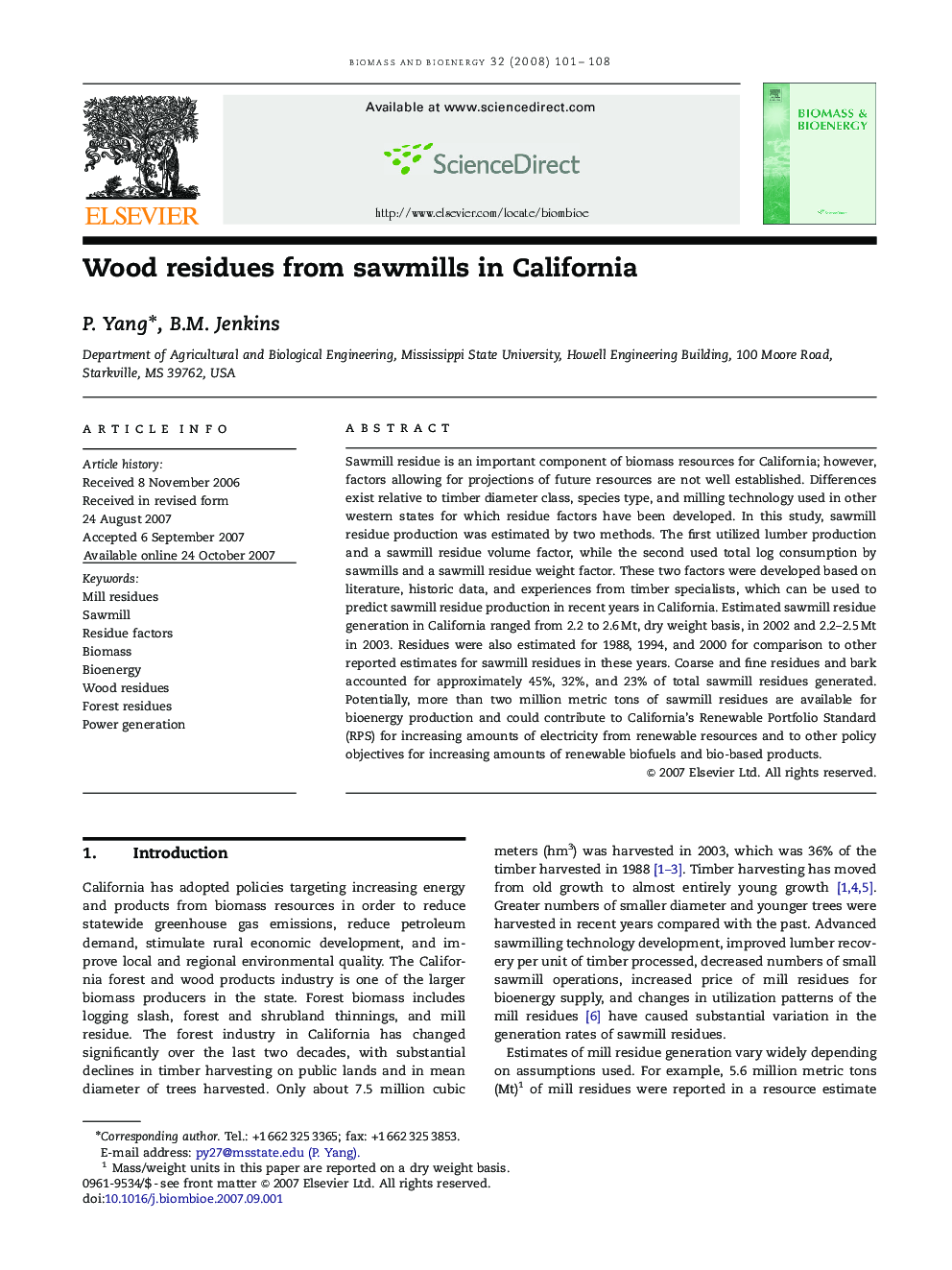| کد مقاله | کد نشریه | سال انتشار | مقاله انگلیسی | نسخه تمام متن |
|---|---|---|---|---|
| 678683 | 888664 | 2008 | 8 صفحه PDF | دانلود رایگان |

Sawmill residue is an important component of biomass resources for California; however, factors allowing for projections of future resources are not well established. Differences exist relative to timber diameter class, species type, and milling technology used in other western states for which residue factors have been developed. In this study, sawmill residue production was estimated by two methods. The first utilized lumber production and a sawmill residue volume factor, while the second used total log consumption by sawmills and a sawmill residue weight factor. These two factors were developed based on literature, historic data, and experiences from timber specialists, which can be used to predict sawmill residue production in recent years in California. Estimated sawmill residue generation in California ranged from 2.2 to 2.6 Mt, dry weight basis, in 2002 and 2.2–2.5 Mt in 2003. Residues were also estimated for 1988, 1994, and 2000 for comparison to other reported estimates for sawmill residues in these years. Coarse and fine residues and bark accounted for approximately 45%, 32%, and 23% of total sawmill residues generated. Potentially, more than two million metric tons of sawmill residues are available for bioenergy production and could contribute to California's Renewable Portfolio Standard (RPS) for increasing amounts of electricity from renewable resources and to other policy objectives for increasing amounts of renewable biofuels and bio-based products.
Journal: Biomass and Bioenergy - Volume 32, Issue 2, February 2008, Pages 101–108